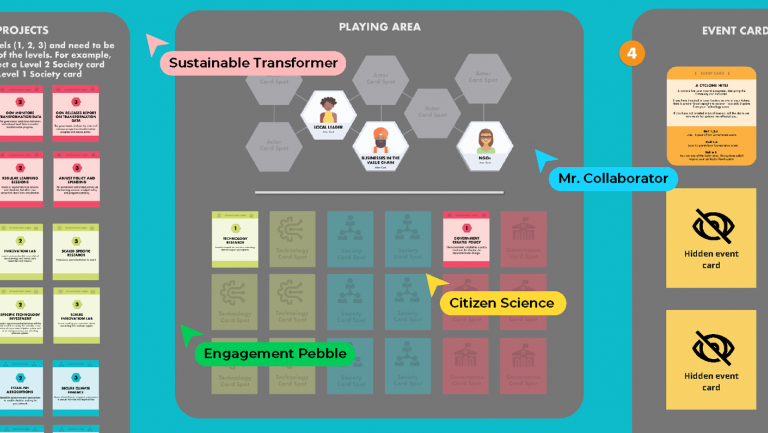Sign up for our monthly newsletter

A change you can't communicate is no change at all...
It’s a failure rate that is stunning.
Major corporate transformation programs – the kind that routinely follow months or years of planning (and investment of astronomical resources) - have a success rate of less than 50 per cent.
In fact, some experts say it is as low as 20 per cent.
And if you are missing this one crucial part of the puzzle it won’t matter how long you plan or how much you spend. Failure to make your change stick and become part of your organisation’s culture is assured.
Change expert John Kotter lists ‘under-communication’ as one of the major reasons change efforts fail. So many organisations think that a glossy plan, poster or an all-staff email can deliver successful long-term organisational and cultural change.
They think that designing the large-scale change and communicating it are two different things. And too often, they don’t apply the same analytical rigour and investment to employee communications that they give to working out the operational and financial processes that are going to change.
At ThinkPlace we specialise in large-scale transformations and we understand that such changes generally take place within complex systems. If you haven’t taken the time and selected an approach that allows you to understand how the parts of the system are interconnected, then you won’t be able to simply drop in a set of changes and stand back as they are instantly adopted.
I have never been in a workshop where communication hasn’t been mentioned as a critical component in project success. And yet, so many organisations devote insufficient time and resources to getting it right.
We’ve learned to do things differently – a better approach. Here are some of the questions you should be asking if you want to be part of the 50 per cent of changes that actually succeed .
CAN WE HELP WITH YOUR STRATEGIC COMMUNICATIONS CHALLENGE? GET IN TOUCH...
Are you thinking about your people?
It seems redundant to say that the most important factor in change management is the people. But how do you reach your people? How do you get them to act?
Effective strategic communication has the capacity to steer substantial change. Without it, organisations struggle to take people with them and achieve what they set out to do.
Research has shown consistently that band-aid solutions, token consultation and dictating cultural change from the top are all doomed to fail. So why do organisations continue to try and implement major organisational change doing just that?

Your people are your resources, your assets, the drivers and implementors of the change you want to make.
What we have learned over many years and successful projects at ThinkPlace is that the best way to give voice to all the affected people in major organisational redesign is through human-centred co-design and good strategic communication.
You need their commitment… but have you listened to them?
People are much more likely to buy-in to change if their voice has been heard and genuinely considered. Often this starts at the beginning of a project. Designing with your staff as collaborators means they are invested in change and acclimated gradually to the new way of doing things. They understand not just the ‘what’ of the change but also the ‘why?’ and they will act as drivers of change instead of resisting and undermining. That’s why we rely so much on co-design to secure great outcomes.
The other thing they need is clarity around what the organisational goals are and how their work contributes to those. Good strategic communication is communication that is focussed on the desired goals – organisational and individual.
Are you doing more than just ‘telling them?’
Powerful strategic communication builds identity, aligns values and gets people on the same page.
It’s not just about sharing information (although that is a no brainer). It’s about your actions – what you do is as important as what you say. Aligning actions with messages – and using actions deliberately to send those messages – is a critical component of strategic communication.
So you think you’re doing internal communication?’
There’s no such thing! (OK, there is, but think of it this way…) Everything you do inside your organisation should be considered external – the work you do with clients, the way your people talk about your organisation and each other, how you present what you do and how you do it.
How your people feel and talk about your organisation manifests externally. People will notice.
That’s why powerful strategic communication is essential. It builds relationships, amplifies visibility and enhances reputation.
Have you thought enough about culture?
A fragmented and disconnected workforce will not produce good business outcomes. Team morale, engagement and job satisfaction matter. If they aren’t trending well, your change is in trouble. Every interaction between people in your organisation builds your culture – through sharing important cultural characteristics that define the organisation.
We all know that leaders are crucial to major change – they must be walking the walk and talking the talk – and this can’t be delegated. Warren Bennis, a pioneer of leadership and organisational studies, said “Organisational systems must renew themselves continuously if they are to survive”.
Too many change efforts that we see fail pay plenty of attention to process and the mechanics of a new system (how things should work). But they do not spend anywhere near enough time thinking about culture.
Are you creating a plan to allow change to succeed over time?
Our approach sets a course for a journey rather than a single intervention. To understand the best capability-building approach – you need to talk to the people who will be affected by it and who will be implementing it – Usually, that’s your entire workforce.
ThinkPlace has extensive experience using co-design to develop highly nuanced approaches to organisational design and to implement major change in complex environments. Co-design is important but so is capability building. For a change to stick, your plan needs to take into account how you’ll develop your people so that their level of competency is elevated over time.
Are you leaving all your communication till the project end?
When it comes to large-scale change, implementation and communication are often left to the last minute. They are something you do after you’ve created the new system or project or org design. By that stage the people running the project are running out of puff and the people who it is being applied to (who haven’t been included along the journey) feel it is being done to them (not with them).
That’s when people complain of change fatigue.
And that’s when they revert to what they know.
Strategic communication planning may be the final piece of the puzzle for your organisation but it needs to be part of your plans from the start. Really understanding the goals of the organisation and making every message and action align with those goals; listening and responding to all your key stakeholders (employees, customers, etc), and understanding what you are trying to do with each of these groups will drive success.
INTERESTED IN THINKPLACE? JOIN OUR COMMUNITY OF GLOBAL CHANGEMAKERS







